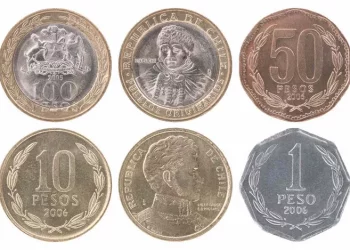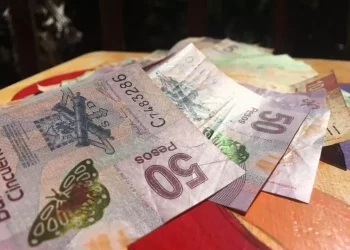At its essence, the RMB selling rate refers to the price at which financial institutions, such as banks, sell the Chinese Renminbi (RMB) in exchange for another currency. This rate is a crucial determinant in international financial transactions, dictating how much of a foreign currency one must part with to obtain a specific amount of RMB. For example, if a bank’s RMB selling rate against the US dollar is 7.3, it means that to purchase 1 Chinese yuan, a customer needs to pay 0.137 US dollars (1/7.3). This rate is not static; rather, it fluctuates constantly in response to a multitude of factors in the global foreign exchange market. The RMB selling rate plays a pivotal role in various international economic activities. In international trade, when foreign businesses want to import goods from China, they need to buy RMB to pay for these imports. The selling rate directly affects the cost of these imports in their home currency. A more favorable RMB selling rate for them (a lower amount of their currency needed to buy RMB) can make Chinese products more affordable and thus boost the demand for Chinese exports. In the realm of international investment, foreign investors looking to invest in China’s financial markets or establish businesses in the country also rely on the RMB selling rate. It determines how much of their home currency they must convert to obtain the necessary RMB for their investment.
Factors Shaping the RMB Selling Rate
Macroeconomic Indicators
Interest Rates: Interest rates in China and other major economies have a substantial impact on the RMB selling rate. Higher interest rates in China tend to attract foreign investors seeking better returns on their investments. When foreign investors want to invest in Chinese financial assets, such as bonds or stocks, they need to buy RMB. This increased demand for RMB in the foreign exchange market can drive up its value, resulting in a lower RMB selling rate (less of the foreign currency is needed to buy RMB). Conversely, if interest rates in other major economies are relatively higher, it may lead to a decrease in the demand for RMB, causing the RMB selling rate to rise.
Inflation Rates: Inflation is another key factor influencing the RMB selling rate. A relatively lower inflation rate in China compared to other countries can strengthen the RMB. When inflation in China is low, the purchasing power of the RMB remains relatively stable or increases. Foreigners are more likely to hold RMB as it retains its value better. This increased demand for RMB can lead to a lower selling rate. On the other hand, if China experiences high inflation, the value of the RMB may depreciate, and the RMB selling rate will increase as more of the foreign currency is required to buy the same amount of RMB.
Economic Growth: The pace of economic growth in China also affects the RMB selling rate. A rapidly growing Chinese economy often attracts more foreign investment. As foreign companies and investors pour money into China to take advantage of business opportunities, they need to purchase RMB. This surge in demand for RMB can push down the selling rate. In contrast, if China’s economic growth slows down, the attractiveness of investing in China may decrease, leading to a reduced demand for RMB and an increase in the selling rate.
Balance of Payments
Trade Balance
The trade balance between China and the rest of the world has a direct bearing on the RMB selling rate. If China exports more goods and services than it imports, it has a trade surplus. In this case, foreign importers need to buy more RMB to pay for Chinese goods. The increased demand for RMB in the foreign exchange market can drive down the RMB selling rate. Conversely, if China has a trade deficit, meaning it imports more than it exports, the demand for foreign currencies to pay for these imports increases, and the RMB selling rate is likely to rise.
Capital Flows
In addition to trade – related flows, capital flows, including foreign direct investment (FDI) and portfolio investment, also impact the RMB selling rate. When there is a significant influx of FDI into China, foreign investors need to convert their home currency into RMB. This raises the demand for RMB, causing the selling rate to decrease. Similarly, if there is a large amount of portfolio investment flowing into Chinese financial markets, such as when foreign investors buy Chinese stocks or bonds, it also increases the demand for RMB and can lower the selling rate. On the contrary, if there are capital outflows from China, the demand for RMB decreases, and the selling rate may increase.
The RMB Selling Rate in Different Markets
In the Inter – bank Foreign Exchange Market
The inter – bank foreign exchange market is where financial institutions trade currencies among themselves. In this market, the RMB selling rate is determined by the supply and demand dynamics among banks. Banks that have a surplus of RMB may sell it to other banks that need RMB to meet the demands of their customers. The trading activities in this market are highly influenced by the macroeconomic factors mentioned earlier. For example, if economic data indicates strong economic growth in China, banks may anticipate increased demand for RMB and adjust their selling rates accordingly. Central banks also play a role in this market. The People’s Bank of China can intervene by buying or selling RMB to influence the overall supply and demand and thus stabilize the RMB selling rate within a certain range.
In the Retail Foreign Exchange Market
The retail foreign exchange market caters to individual customers, such as tourists, expatriates, and small – scale investors. In this market, the RMB selling rate offered by banks and other financial institutions to individual customers is usually different from the inter – bank rate. Banks add a spread to the inter – bank rate to cover their costs and make a profit. For example, if the inter – bank RMB selling rate against the euro is 7.8, a bank may offer a selling rate of 7.85 to individual customers. This spread can vary depending on the currency pair, the volume of the transaction, and the competition among financial institutions in the retail market. Retail customers may also face additional fees or charges when exchanging currencies, which further affects the effective RMB selling rate they experience.
The Significance of the RMB Selling Rate for the Chinese Economy
For Exporters and Importers
The RMB selling rate has a direct impact on the competitiveness of Chinese exporters and the cost of imports for Chinese importers. A lower RMB selling rate (stronger RMB) can make Chinese exports more expensive for foreign buyers. This may lead to a decrease in the demand for Chinese exports as foreign customers may turn to cheaper alternatives from other countries. On the other hand, a lower RMB selling rate is beneficial for Chinese importers as it reduces the cost of importing goods and services in RMB terms. They can buy more foreign goods for the same amount of RMB. Conversely, a higher RMB selling rate (weaker RMB) can make Chinese exports more competitive in the international market as they become cheaper for foreign buyers. However, it can increase the cost of imports for Chinese importers.
For the Financial Sector
In the financial sector, the RMB selling rate affects the profitability and risk management of financial institutions. Banks and other financial institutions that engage in foreign exchange trading need to carefully manage their exposure to fluctuations in the RMB selling rate. If a bank misjudges the direction of the RMB selling rate movement, it may incur losses in its foreign exchange trading activities. For example, if a bank sells RMB at a certain rate expecting the rate to remain stable or decrease, but the RMB selling rate suddenly increases, the bank may end up with a loss when it has to repurchase RMB at a higher rate. In addition, the RMB selling rate also impacts the valuation of foreign – currency – denominated assets and liabilities held by financial institutions. A change in the RMB selling rate can lead to fluctuations in the value of these assets and liabilities, affecting the overall financial health of the institutions.
Conclusion
The RMB selling rate is an inherently complex and perpetually dynamic variable, intricately shaped by an extensive array of macroeconomic, trade – related, and market – specific determinants. On the macroeconomic front, elements such as interest rates, inflation differentials, and the pace of economic growth in China relative to the global economy play pivotal roles. Interest rate fluctuations in China can significantly sway the attractiveness of its financial assets to foreign investors, thereby altering the demand for RMB and, in turn, its selling rate. Similarly, inflation rates, which impact the purchasing power of the currency, have a direct bearing on whether foreign entities are more or less inclined to hold RMB, thus influencing the selling rate. Economic growth, as a barometer of a country’s economic vitality, can either draw in substantial foreign investment, increasing the demand for RMB and potentially lowering the selling rate, or have the opposite effect during periods of slow – down.
Related topics:



























